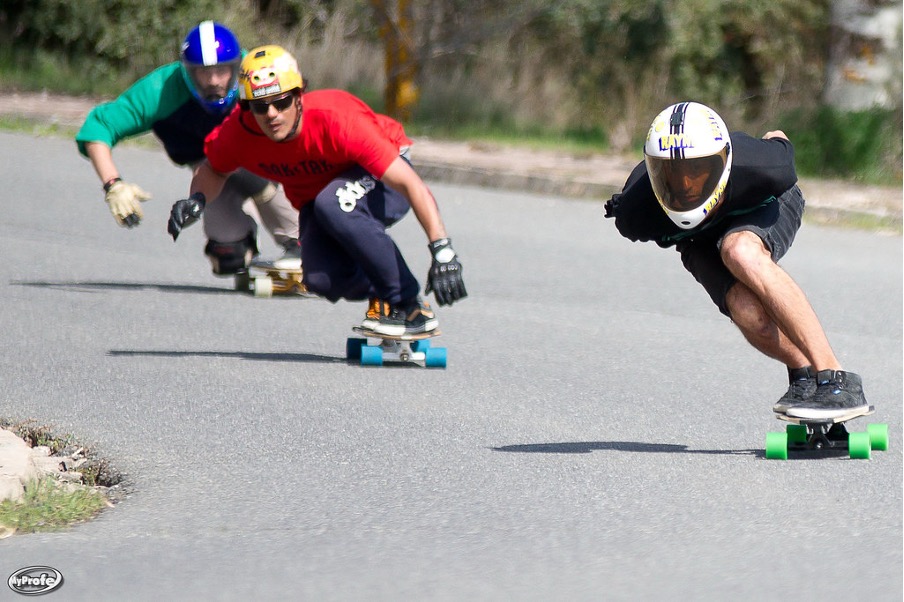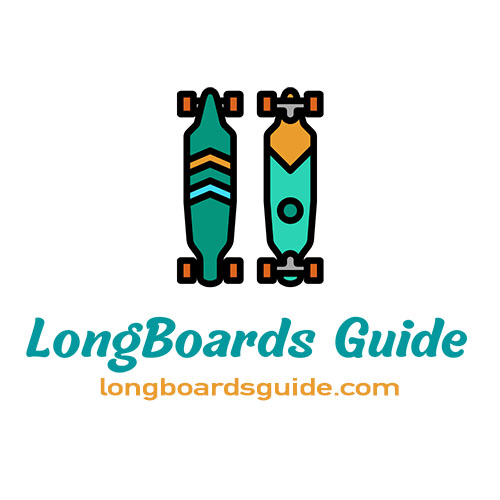Skateboarding is an iconic street sport whose players always appeal to our eyes with graceful silhouettes when caught.
There are a lot of techniques and disciplines to talk about when it comes to this game, from usual moves, such as freestyling, cruising, and freeriding, to complex ones, like downhill or dancing.
However, carving is the fundamental feature beginners need to excel in before learning those techniques.
What is carving on a longboard? How to do it correctly? This article covers all the questions about this basic discipline.
What Is Carving On A Longboard?

Carving is a basic technique that any longboarder must practice and master to unlock other riding potentials.
This riding discipline involves carving curves and lines into whichever pavement. Snowboarders, longboarders, and surfers are alike – they carve.
In essence, carving on a longboard is a variation of ocean surfing. It is artistic and technical simultaneously, bringing a fantastic feeling of freedom and motion.
The carving discipline is all about speed and curves. Players use it to monitor speed when downhill speedboarding. They make sharp turns to slow down.
Carving has transformed into a unique longboarding style, involving mellow movements with a repetitive swinging motion that generates powerful turns.
A carver should maintain speed naturally without pushing hard when moving on a flat surface. The same goes when a surfer gains momentum on waves.
Before learning more advanced longboard tactics, you must master the fundamentals of carving. You’ll understand the reason if you consider how other boarding disciplines work.
For example, cruising often acts as a way of commuting, involving riding around by pushing and kicking your board. But you can’t perform it if you can’t do curves correctly.
Likewise, freeriding is about riding downhill with the rider controlling his speed by sliding and maneuvers.
It’s impossible to go downhill if you fail to carve. A carving move also acts as a warm-up for a power slide.
This riding style is the same as freeride but includes high-speed riding. Curves are critical when going downhill, particularly when approaching curves or corners.
The same goes for freestyle riding, which also includes curves, though it doesn’t focus on speed. Since it focuses on technical tactics, it will involve curves.
Meanwhile, dancing involves boasting about your balancing abilities. You wander around your board performing some crossing tricks.
Why is carving a critical skill when dancing on your longboard? Because some slides will involve this tactic after the rider performs some dance slides.
What Is The Benefit of Carving?
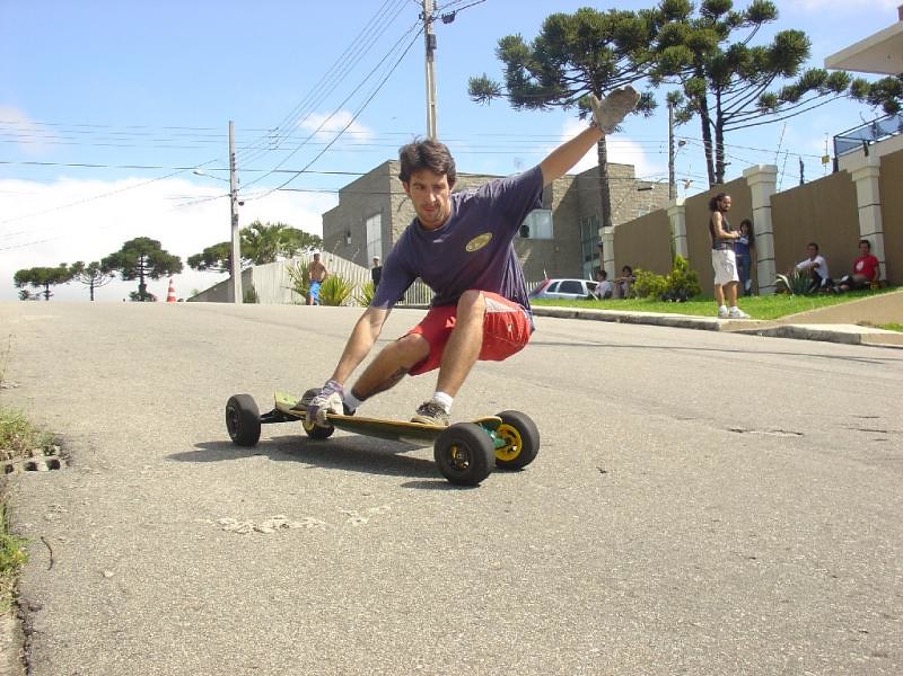
Besides being the fundamental move before other more advanced tactics, carving benefits riders in other aspects as well.
Control
Speed control is the most crucial factor when practicing this discipline.
You will eventually hurt yourself if you fail to control your skateboard and balance. Over time, you may lose motivation and interest in this sport.
Once you excel in drawing curves, you’ll know how to control your deck, including performing technical tricks, slowing it down, and turning around.
Excitement
The skateboarding game is just tedious if the rider keeps rolling along a flat driveway without challenges.
Like any other sport, extreme challenges are the soul of the game, and players will attempt to step up once they get comfortable with the fundamentals.
Perform curves allows you to level the thrill up to the highest point, making you more immersed in the gameplay.
Options
Some skateboarders go for flexible, bouncy decks for the best movement, versatility, and crazes ahead of the board.
Some prefer stiffer boards that don’t bend because of their weight. Meanwhile, some lean toward loose trucks, and some prefer tight.
This technique applies to many decks, trucks, bearings, and wheels, allowing the rider to customize his longboard freely.
How To Carve On A Longboard?
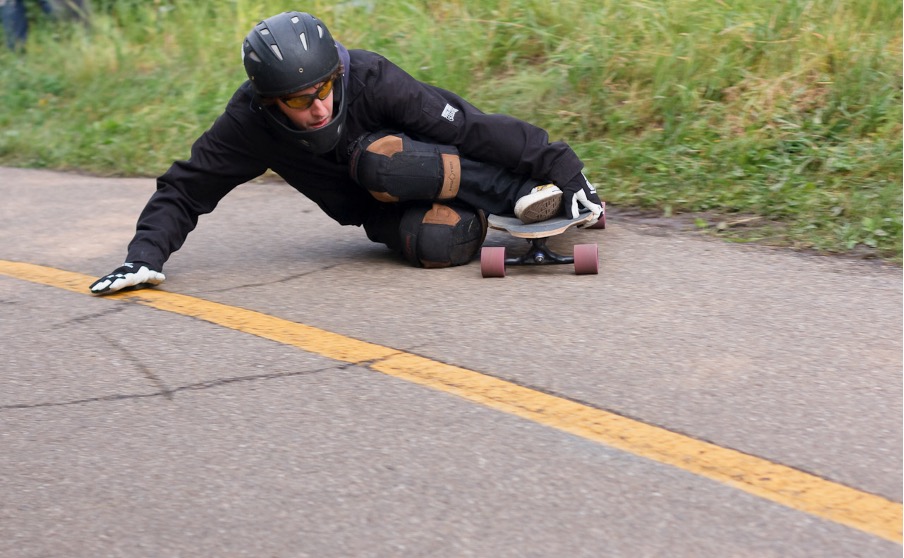
The following guide will take you through the basic steps to start this riding tactic technically right and safely.
Safety Comes First
Keep in mind that safety is always the top concern when skateboarding. You won’t enjoy this sport for an extended time if you suffer permanent injuries due to negligence.
Though a helmet may save you from devastating head injuries, it alone is not enough to protect your entire body.
Thus, always wear full gear, including gloves, elbow pads, knee pads, and a helmet. Whether a professional or beginner, you can’t miss out on adequate safety gadgets.
Avoid practicing in busy parks or on streets with high traffic. You’re still a newbie and can’t ascertain there will be no threat to people during your practice, right?
Pre-Carving Rituals
We recommend practicing on a broad roadway or space with a decent slope. It will help you properly carve with your deck.
The important point is that it’s never wise to take a highly steep route right from the beginning. Start from basics before taking your ladder up.
Heel-Focused & Toe-Focused Carving
Start pushing your heels or toes on the deck. Remember that your foot’s position when skating will affect the direction where you spin.
You’re a typical skater if you move your left foot forward, and if your right foot moves forward, you’re a goofy longboarder.
For typical skaters, you can rotate the deck clockwise by insisting your toes on the rail and pushing forward (toeside turning).
Pulling back into the heels (heelside turning) may cause your deck to stir counter-clockwise.
Meanwhile, the opposite goes for goofy longboarders. Toeside turning will cause the deck to stir counter-clockwise, whereas heelside turning will push the deck to rotate clockwise.
Shift Your Weight
This tactic requires the rider to adjust his body continually, incorporating many body components.
It calls for the simultaneous work of the toes and heels and a smooth transition from heel to toe.
You must look behind and stretch your chest to gain a secure posture when turning. Also, ensure to bend your knees while slightly opening your arm.
After repeatedly practicing the tactic, shifting your weight with more control will be easier.
This fantastic guide video shows you how to carve on your longboard safe and sound:
What To Consider When Buying A Carving Longboard?
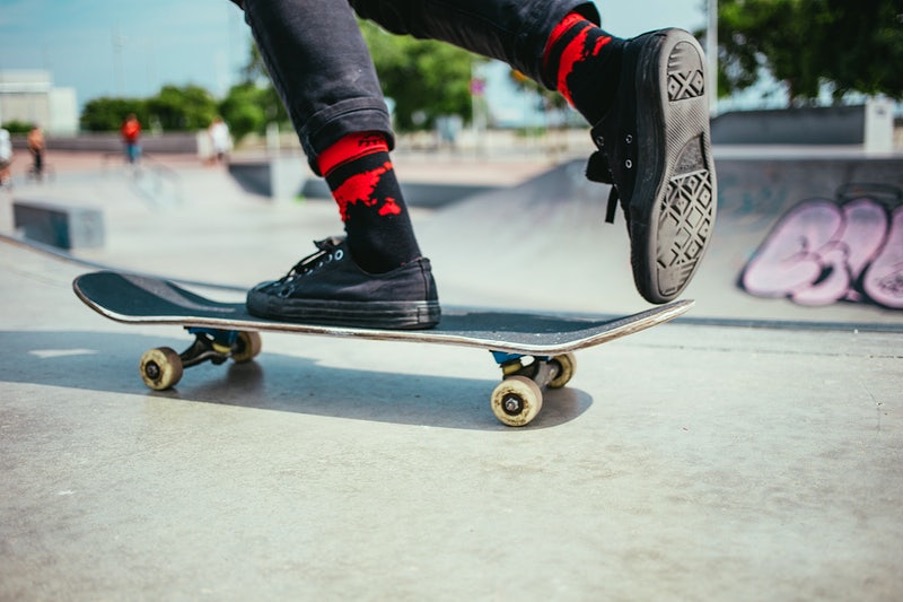
A suitable, quality longboard contributes greatly to a beautiful curve. There are various models on the market, yet not every product will yield the best performance. So, what to consider when purchasing one?
Trucks
The shaft’s width will primarily affect your carve’s direction. Usually, a board with a broader width will cause minimal wheel bite and offer more stability.
On the other hand, a narrow board will assist you in gripping the roadway, providing flexible navigation.
The regular width for skateboards used for the carving technique is 180mm.
Yet, some cultured players still use narrower decks to maximize their speed (for example, 150mm).
Bushing Seats
You’ll need to employ soft pushing when performing curves to turn right.
The bushing seats here are the space inside the trucks where the bushing stays fixed, which can be round or flat.
Depending on the seats’ shape, you may add fewer or more bushings to minimize the impacts caused by the riding feel.
Typically, the round is the shape that applies best to bushing seats for carvers.
Mount Type
The two popular mount sorts for carver decks are drop through and top mount.
A top mount board screws the truck underneath the deck, while a drop-through model will have the truck liner on the top.
Top mount boards are the go-to choice for longboarders due to that ability. Yet, the critical point is that their prices are relatively high.
Deck Flex and Length
Carver longboards don’t usually come in a great length, ranging from only 35 to 40 inches. But this limited length turns out to offer a speedier spin than decks for cruising.
Besides, a deck must be sturdy and flexible to gear up your vibrations. Thus, manufacturers use hybrid bamboo or bamboo materials for carver boards.
Conclusion
Carving on a longboard is the key to enjoying riding. That’s the ultimate answer to ‘what is carving on a longboard?’
The tactic does not only help with practicing turning, but it also allows riders to add control speed when going downhill.
To become a powerful longboarder, you’ve got to pick this basic technique up and be adept at it first. So, let’s do some carving today!




